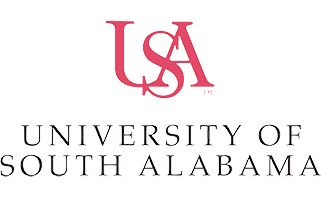
|
Policy No: 2065
Responsible Office: Research Compliance and Assurance
Last Review Date: 03/01/2023
Next Required Review: 03/01/2028
|
Use of Human Cell Lines and Culture for Research Lab Personnel
1. Purpose
The purpose of this policy is to give the USA research community guidance and information on the regulatory background when working with cell lines, human derived cell lines, tissues and other potentially infectious materials (OPIM). Protocol submissions to the Institutional Biosafety Committee (IBC) must acknowledge the potential risk associated with use of cell lines, human derived cell lines, humanized animal cells, tissues, and other potentially infectious materials (OPIM) to be considered for protocol approval. This potential and known risk of infection should be addressed in any IBC protocol submission.
2. Applicability
This policy applies to Academic Affairs, Research & Economic Development and Medical Affairs, or any member of the USA community whose work involves well-characterized human cell lines and cultures that the user believes is void of any bloodborne pathogen or any adventitious zoonotic agent and thus should be considered as other potentially infectious materials (unfixed human tissues and bodily fluids).
3. Definitions
Bloodborne Pathogens: Pathogenic microorganisms present in human blood that can cause disease in humans. These pathogens include, but are not limited to, hepatitis B virus (HBV) and human immunodeficiency virus (HIV).
Universal Precautions: An approach to infection control to treat all human blood and bodily fluids as if they were known to be infectious for HIV, HBV, and other bloodborne pathogens.
4. Policy Guidelines
In 1991, the Occupational Safety and Health Administration (OSHA) issued the Bloodborne Pathogens (BBP) Standard to protect employees who have occupational exposure to human blood or other potentially infectious materials. While human blood, most body fluids, unfixed human tissues and organs were clearly included within the scope and application of the standard, the inclusion of human cell lines was ambiguous.
In 1994, OSHA issued an interpretation of the applicability of the BBP Standard towards human cell lines. According to the interpretation, human cell lines are considered to be potentially infectious and within the scope of the BBP Standard unless the specific cell line has been characterized to be free of hepatitis viruses, HIV, Epstein-Barr virus, papilloma viruses and other recognized bloodborne pathogens. In conjunction with this interpretation, the American Type Culture Collection (ATCC) recommends that all human cell lines be accorded the same level of biosafety consideration as a line known to carry HIV. Additionally, the 6th Edition of the CDC/NIH publication, Biosafety in Microbiological and Biomedical Laboratories (BMBL), recommends that human and other primate cells should be handled using Biosafety Level 2 (BSL2) practices and containment. Any work with human cell lines in animals requires ABSL-2 containment and work practices as described in the BMBL 6th edition.
All cell and organ cultures of human origin, including well established cell lines, shall be handled in accordance with the OSHA Bloodborne Pathogens Standard and under Biosafety Level 2 (BSL2) containment. Therefore, all research using human or non-human primate blood, body fluids, or tissues or cell cultures (as described below) must be registered with the Institutional Biosafety Committee.
4.1 Cell Cultures
When cell cultures are known to contain an etiologic agent, an oncogenic virus or amphotropic packaging system the cell line must be classified at the same level as that recommended for the agent.
Furthermore, the following must be handled at Biosafety Level 2 or higher containment level:
-
- All cell lines of human/primate origin;
- Any cell lines derived from lymphoid or tumor tissue;
- All cell lines exposed to or transformed by any oncogenic virus;
- All cell lines exposed to or transformed by amphotropic packaging systems;
- All clinical material (e.g., samples of human tissues and fluids obtained after surgical resection or autopsy);
- All cell lines new to the laboratory (until proven to be free of all adventitious agents);
- All mycoplasma-containing cell lines.
5. Procedures
The principle and approach for handling bloodborne pathogens and OPIM’s is known as “universal precautions”. Exposure control practices employ the universal precautions approach that is intended to protect those handling these materials as well as others who may be in the vicinity. The USA Biosafety Manual and Exposure Control Plan, Section 4 provides additional details.
6. Enforcement
The Institutional Biosafety Committee is authorized to inspect research facilities, approve research practices and procedures, and to take actions, such as enforcement of cessation of research activities, in the event of an unsafe workplace situation.
7. Related Documents
7.1 OSHA Letter of Interpretation
7.2 ATCC (American Type Culture Collection) FAQs
7.3 Biosafety in Microbiological and Biomedical Laboratories, 6th edition, U.S. Health and Human Services
7.4 NIH Guidelines for research Involving Recombinant or Synthetic Nucleic Acid Molecules, April 2019, National Institutes of Health, Office of Science Policy.
7.5 29 CFR 1910.1030 Bloodborne Pathogens, U.S. Department of Labor, Occupational Safety and Health Administration, Accessed May 30, 2018.
